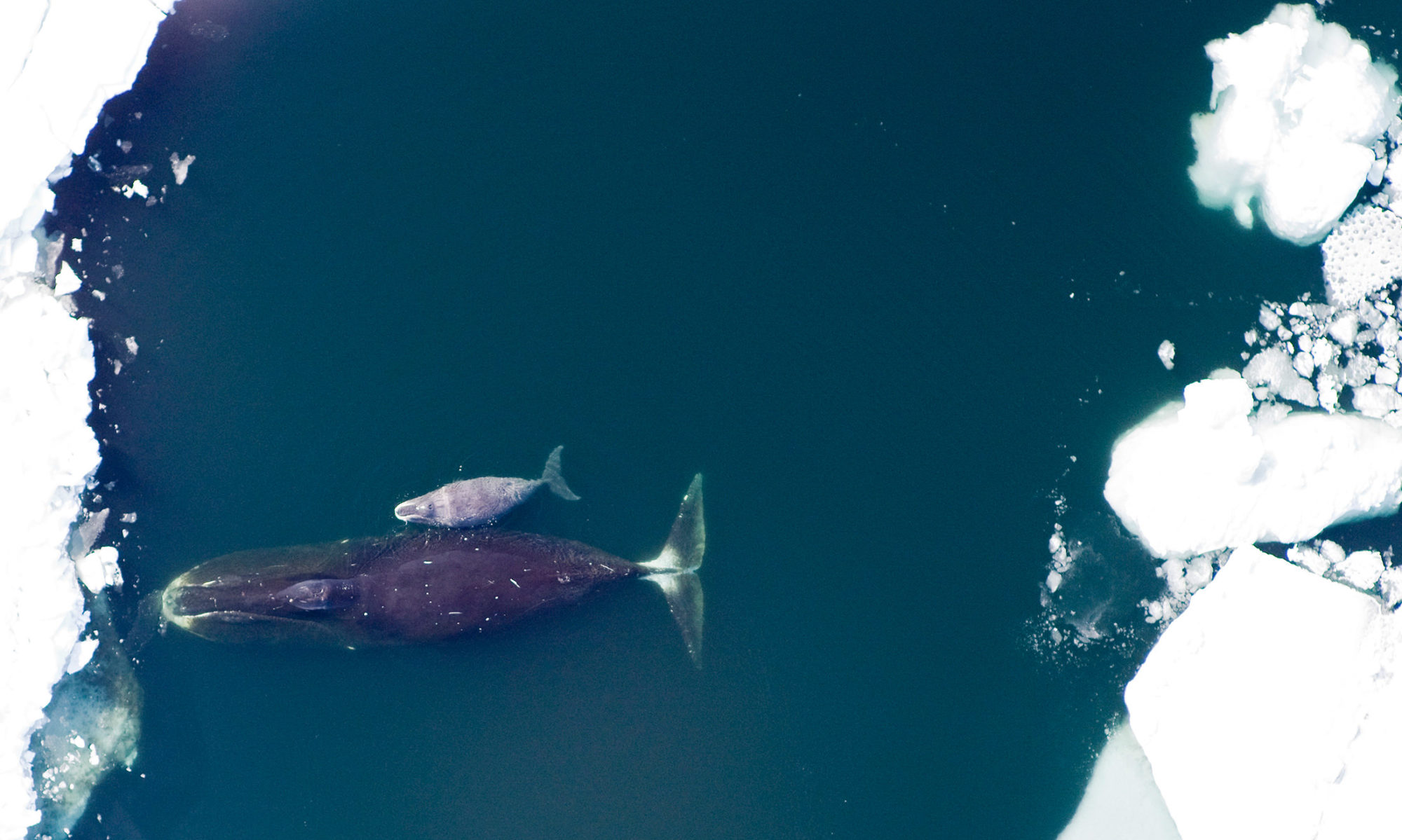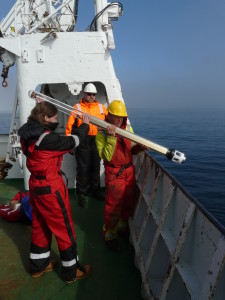On this page we’d like to highlight women in marine sciences.
Annie Bourbonnais – Nitrogen loss in marine Oxygen Deficient Zones
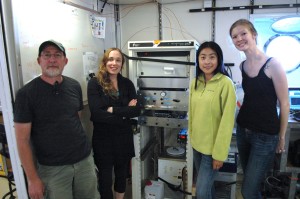 Annie Bourbonnais with Prof. Mark Altabet and former M.Sc. student Happy Hu in front of a Quadrupole mass spectrometer for onboard measurements of N2/Ar during a cruise in the Oxygen Deficient Zone (ODZ) of the Eastern Tropical North Pacific in May/June 2014. Our research is focused on the biogeochemical oceanographic processes that affect climate, particularly nitrogen (N), an essential nutrient for all organisms that limits marine primary productivity in most of the ocean. This project was part of collaboration with Dr. Eric D’Asaro and Dr. Craig McNeil (University of Washington) who used a novel gas tension device on automomous Lagrangian Floats to measure excess dissolved N2 produced during N-loss in ODZs. Our team calibrated these float measurements during the cruise using this onboard Quadruple mass spectrometer and a continuous flow isotope ratio mass spectrometer in the laboratory.
Annie Bourbonnais with Prof. Mark Altabet and former M.Sc. student Happy Hu in front of a Quadrupole mass spectrometer for onboard measurements of N2/Ar during a cruise in the Oxygen Deficient Zone (ODZ) of the Eastern Tropical North Pacific in May/June 2014. Our research is focused on the biogeochemical oceanographic processes that affect climate, particularly nitrogen (N), an essential nutrient for all organisms that limits marine primary productivity in most of the ocean. This project was part of collaboration with Dr. Eric D’Asaro and Dr. Craig McNeil (University of Washington) who used a novel gas tension device on automomous Lagrangian Floats to measure excess dissolved N2 produced during N-loss in ODZs. Our team calibrated these float measurements during the cruise using this onboard Quadruple mass spectrometer and a continuous flow isotope ratio mass spectrometer in the laboratory.
Photo credit: Craig McNeil.
Brooke Flammang – Researching the biomechanics of fishes
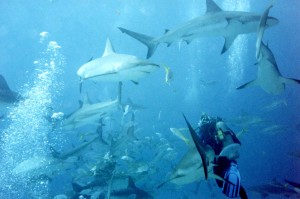 Brooke Flammang, Assistant Professor of Biology at the New Jersey Institute of Technology, studying the biomechanics and fluid dynamics of fishes and their fins, with applications in bio-inspired robotics. Some species of interest include bony fish with flexible fins, sharks, and remoras. She is interested in the functional morphology of fishes that enable them to do amazing things.
Brooke Flammang, Assistant Professor of Biology at the New Jersey Institute of Technology, studying the biomechanics and fluid dynamics of fishes and their fins, with applications in bio-inspired robotics. Some species of interest include bony fish with flexible fins, sharks, and remoras. She is interested in the functional morphology of fishes that enable them to do amazing things.
Renellys C. Perez giving a hands-on density demonstration
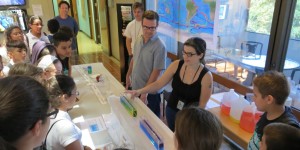 Renellys C. Perez giving a hands-on density and convection current demonstration to middle school students during a NOAA Atlantic Oceanographic and Meteorological Laboratory (AOML) Open House. Students learn how temperature and salinity can modify the density of water, and how density differences can force currents in a small tank. On an ocean-basin scale, density differences can similarly drive large-scale currents such as those involved in the overturning circulation. The overturning circulation is one of the research topics that she is presently investigating. After finishing her PhD at Oregon State University and a National Research Council postdoctoral fellowship at NOAA’s Pacific Marine Environmental Laboratory, she moved back to her hometown to work jointly for the University of Miami and NOAA’s AOML.
Renellys C. Perez giving a hands-on density and convection current demonstration to middle school students during a NOAA Atlantic Oceanographic and Meteorological Laboratory (AOML) Open House. Students learn how temperature and salinity can modify the density of water, and how density differences can force currents in a small tank. On an ocean-basin scale, density differences can similarly drive large-scale currents such as those involved in the overturning circulation. The overturning circulation is one of the research topics that she is presently investigating. After finishing her PhD at Oregon State University and a National Research Council postdoctoral fellowship at NOAA’s Pacific Marine Environmental Laboratory, she moved back to her hometown to work jointly for the University of Miami and NOAA’s AOML.
Femke de Jong on board the Haakon Mosby
Femke de Jong on board the Haakon Mosby deploying RAFOS floats in the Iceland Sea. These floats will drift with the dense water that is making it’s way towards Denmark Strait. While underwater the floats record acoustic signals from moored sound sources that will enable us to track their path. After getting her PhD at the Royal Netherlands Institute for Sea Research (NIOZ) she got a postdoc scholarship at Woods Hole Oceanographic Institution. She currently has a joint position at Duke University and the NIOZ.
